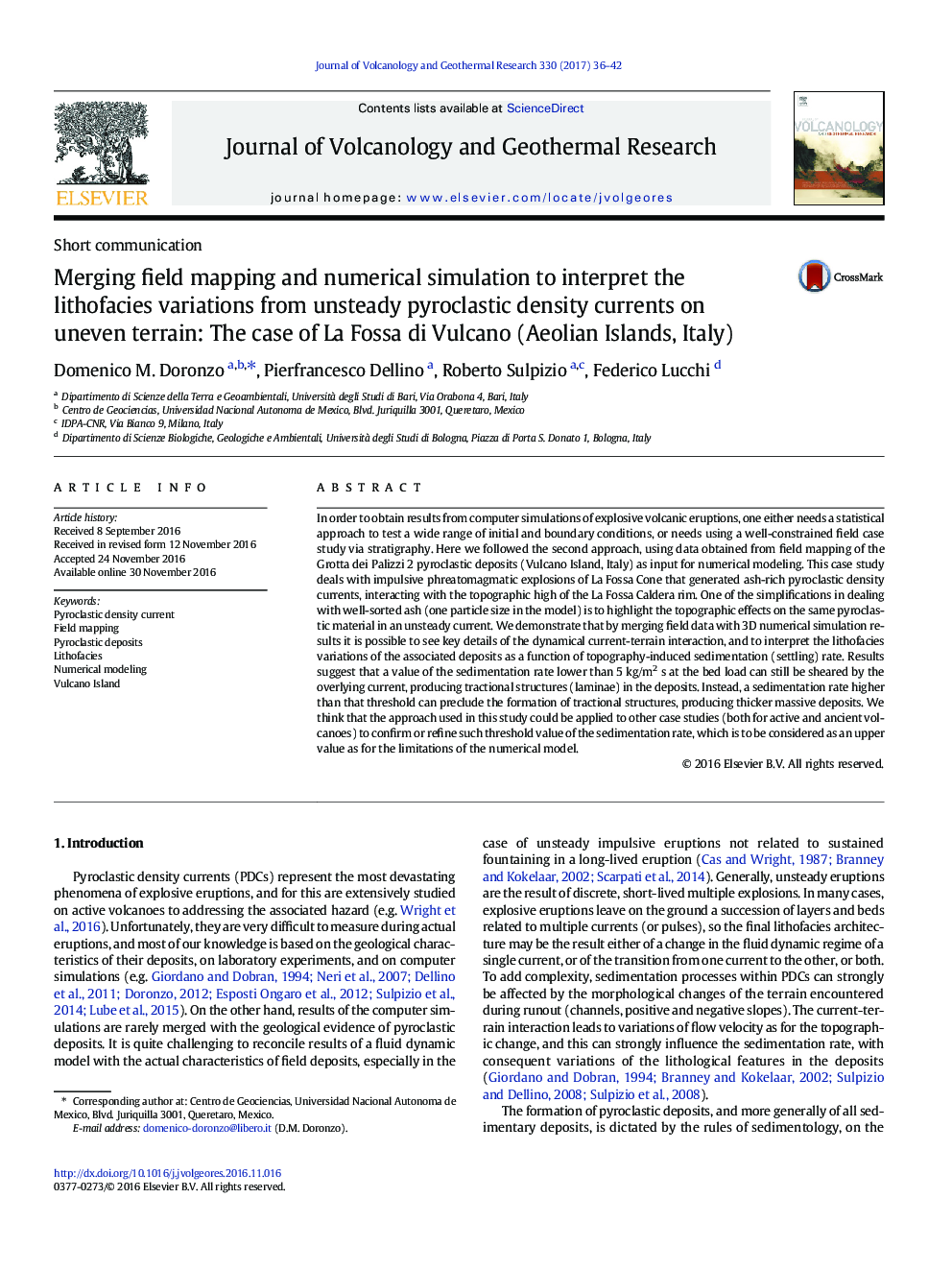| کد مقاله | کد نشریه | سال انتشار | مقاله انگلیسی | نسخه تمام متن |
|---|---|---|---|---|
| 5783708 | 1638292 | 2017 | 7 صفحه PDF | دانلود رایگان |

- Phreatomagmatic explosions at Vulcano generated pyroclastic density currents.
- Pyroclastic density currents interacted with topography.
- We made field study of Grotta dei Palizzi 2 pyroclastic succession.
- We numerically simulated a 3D scenario for Vulcano constrained from the field.
- We discuss the sedimentation rate and importance of the field in volcanic modeling.
In order to obtain results from computer simulations of explosive volcanic eruptions, one either needs a statistical approach to test a wide range of initial and boundary conditions, or needs using a well-constrained field case study via stratigraphy. Here we followed the second approach, using data obtained from field mapping of the Grotta dei Palizzi 2 pyroclastic deposits (Vulcano Island, Italy) as input for numerical modeling. This case study deals with impulsive phreatomagmatic explosions of La Fossa Cone that generated ash-rich pyroclastic density currents, interacting with the topographic high of the La Fossa Caldera rim. One of the simplifications in dealing with well-sorted ash (one particle size in the model) is to highlight the topographic effects on the same pyroclastic material in an unsteady current. We demonstrate that by merging field data with 3D numerical simulation results it is possible to see key details of the dynamical current-terrain interaction, and to interpret the lithofacies variations of the associated deposits as a function of topography-induced sedimentation (settling) rate. Results suggest that a value of the sedimentation rate lower than 5Â kg/m2Â s at the bed load can still be sheared by the overlying current, producing tractional structures (laminae) in the deposits. Instead, a sedimentation rate higher than that threshold can preclude the formation of tractional structures, producing thicker massive deposits. We think that the approach used in this study could be applied to other case studies (both for active and ancient volcanoes) to confirm or refine such threshold value of the sedimentation rate, which is to be considered as an upper value as for the limitations of the numerical model.
Journal: Journal of Volcanology and Geothermal Research - Volume 330, 15 January 2017, Pages 36-42